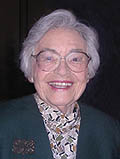Louise Rosenblatt’s Literary Discovery Validates Picture Book Power
“Text is just ink on a page until a reader comes along and gives it life.” ― Louise Rosenblatt
What brilliant quote could ring more true? And what would have happened if Theodore Geisel, while in his advertising career, decided not to show anyone his manuscript in 1937? Clearly, we would of never heard of or read his first children’s title, And To Think That I Saw It On Mulberry Street, which changed children’s literature forever. If he kept his extraordinary children’s writings hidden in the drawer, they would have never been read. And all the marvelous history of Dr. Seuss children’s books would have never materialized.
Louise Rosenblatt’s Transactional Theory
Reader
Louise Rosenblatt explained that the process of reading is actually “transactional.” This can be seen in the diagram. The “meaning” of the words is transacted between the reader and text in a particular context.
Focusing on the reader, there are many variables defining who they may be. These include; age, gender, ethnicity, religion, attitude, and literature experience.] Who is reading the text of Dr. Seuss’ Green Eggs and Ham? Naturally, the meaning a 6 year old takes away from the book will be very different as that from a college professor.
Looking at text, according to Rosenblatt, it is the counterpart to the reader, which is critical in how the book comes alive. Where one may think the text has a specific meaning created from the author, Rosenblatt (1978) looks at it quite differently. She explains text is dynamic and fluid. Here are factors, which can cause variations in text …
- The genre of the written text.
- The text content.
- The reading level challenge of the text.
- The structure of the text.
- The author’s intentions of text meaning.
Finally, when studying the content of text, one may have a particular experience when reading for pleasure verses a completely different experience when they are reading for an assignment.
I’d like to end with another Rosenblatt quote that nicely sums this up …
“The reader brings to the work personality traits, memories of past events, present needs and preoccupations, a particular mood of the moment and a particular physical condition. These and many other elements in a never-to-be-duplicated combination determine his response to the text.” ― Louise Rosenblatt, Making Meaning with Texts: Selected Essays
So go ahead – open up that picture book and let its ink come alive!
Related Posts
Harness the Power of Picture Books (July 22, 2014) https://www.kobeemanatee.com/harness-the-power-of-picture-books/
How to Navigate the World of Picture Book Genres (August 11, 2014) https://www.kobeemanatee.com/how-to-navigate-the-world-of-picture-book-genres/
How Children Benefit from Informational Picture Books (July 25, 2014)https://www.kobeemanatee.com/how-children-benefit-from-informational-picture-books/
~ Robert Scott Thayer
